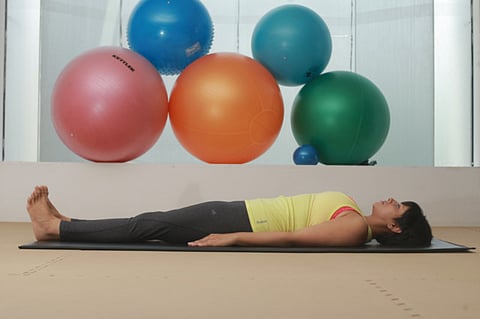The upside of upside-down poses
Bharat Thakur guides you through practices and wisdom of yoga, the ancient science of exercising

The biggest gateway that yoga offers to a great way of life are inverted postures. These are set of yoga postures in which the head is lower than the heart. When practised with precision and care, they can make a dramatic impact on your life, for the better.
(Please consult your doctor before starting any yoga regime at home.)
EFFECT ON THE BRAIN
Blood travels easily to the brain when the head is below the heart, so the brain experiences a smooth, uninterrupted supply of blood. There is a common myth connected to inverted postures, that they increase blood pressure. The fact is the body has a very good regulatory system which controls the flow of blood to the brain, so additional blood does not find its way there. Unless the breath or posture is held for a long time, there is no increase in blood pressure.
EFFECT ON THE HEART
When you are upside down, the heart and diaphragm end up being squashed with the abdominal organs, while the legs are up in the air. This position of the body makes the heart pump harder, as it has to deal with extra load and it has to shunt blood all the way up to the legs. The blood pressure will increase, which in case of a healthy heart, helps build a strong cardiovascular system. For a compromised heart, the trick is to smoothly move in and out of the posture. Holding the posture is for those who want to push up their capacity.
EFFECT ON THE BREATH
Breathing when you are upside-down strengthens the lungs and diaphragm. Runners will see their performance improving by following a simple regime of a handful of inverted postures.
EFFECT ON THE BACK
Being upside down takes the pressure off the discs in your spine, creating space in the vertebra, reducing spinal pain and safeguarding you from future problems, paving the way for a strong spine.
EFFECT ON YOUR ABS
The whole set of inverted postures have it in them to give you sculpted abs with a well-toned upper body. When the balance is disturbed, the whole body and all the muscles work extra hard to keep it going in this topsy turvy position. Remember they are also working against gravitational force so they are notching up strength on the double.
EFFECT ON STRESS
When the head is lower than the feet, blood comes flowing to the throat. There the vagus nerve is nourished with blood, kick-starting the body’s relaxation response, increasing alpha brain waves and bringing about complete stress relief.
With such benefits, one must include inverted postures in their daily life. Sarvangasana, halasana and vipareet karani, three of the most prominent ones are described below. In all the three, breathing is slow, deep and regular. All three positions should be held for 30 seconds to two minutes. Keep your eyes closed and your focus strong all through the practice.
Vipareet karani
Start with this posture. Keep your spine straight and flat and gently lift your butt, giving it support with your hands. Form a V with your legs (see picture).
Halasana
From vipareet karani, drop your legs behind your head, while maintaining balance and keeping the hands to the front (see picture).
Sarvangasana
From halasana, lift your feet up to the ceiling, taking your hands close to your shoulder blades and using them effectively to give yourself an added fillip. This is called the shoulder stand as all your weight is supported by that part of the body.
In all the three postures your chin is powerfully locked to your throat.
End this practice by coming into a Shavasana and practising breath awareness.
In next week’s column: Why sound is the third key to a relaxed yet energised state.
Sign up for the Daily Briefing
Get the latest news and updates straight to your inbox



